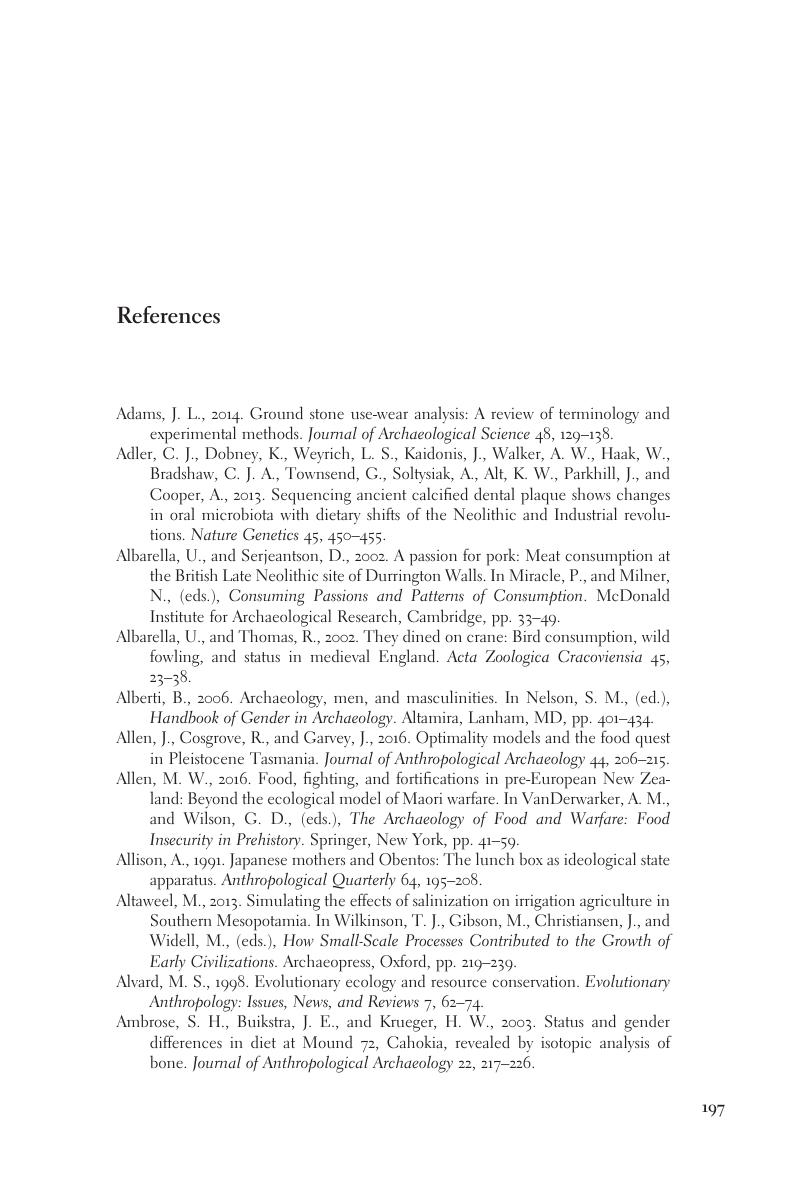Book contents
- The Archaeology of Food
- The Archaeology of Food
- Copyright page
- Contents
- Figures
- Tables
- Acknowledgments
- Chapter 1 What Is Food, and Why Do Archaeologists Study It?
- Chapter 2 How Do Archaeologists Study Food?
- Chapter 3 Food and Economics
- Chapter 4 Food and Inequality
- Chapter 5 Food and Politics
- Chapter 6 Identity: Food, Affiliation, and Distinction
- Chapter 7 Food, Ritual, and Religion
- Chapter 8 Archaeology, Food, and the Future
- References
- Index
- References
References
Published online by Cambridge University Press: 11 November 2019
- The Archaeology of Food
- The Archaeology of Food
- Copyright page
- Contents
- Figures
- Tables
- Acknowledgments
- Chapter 1 What Is Food, and Why Do Archaeologists Study It?
- Chapter 2 How Do Archaeologists Study Food?
- Chapter 3 Food and Economics
- Chapter 4 Food and Inequality
- Chapter 5 Food and Politics
- Chapter 6 Identity: Food, Affiliation, and Distinction
- Chapter 7 Food, Ritual, and Religion
- Chapter 8 Archaeology, Food, and the Future
- References
- Index
- References
Summary

- Type
- Chapter
- Information
- The Archaeology of FoodIdentity, Politics, and Ideology in the Prehistoric and Historic Past, pp. 197 - 238Publisher: Cambridge University PressPrint publication year: 2019



